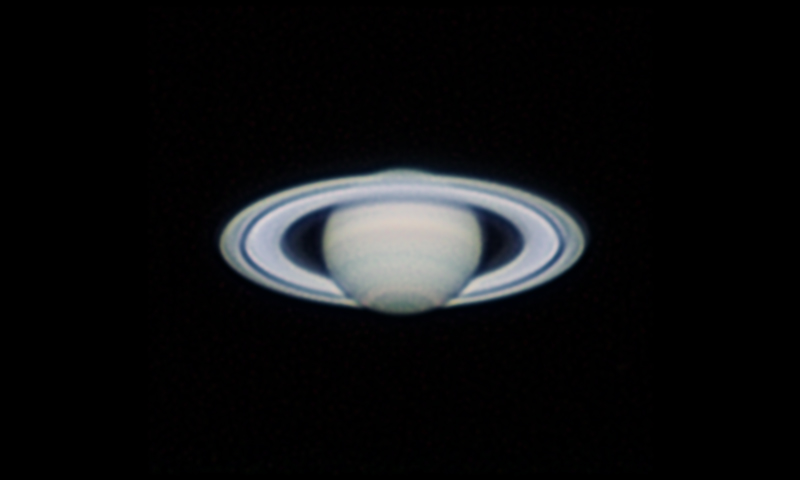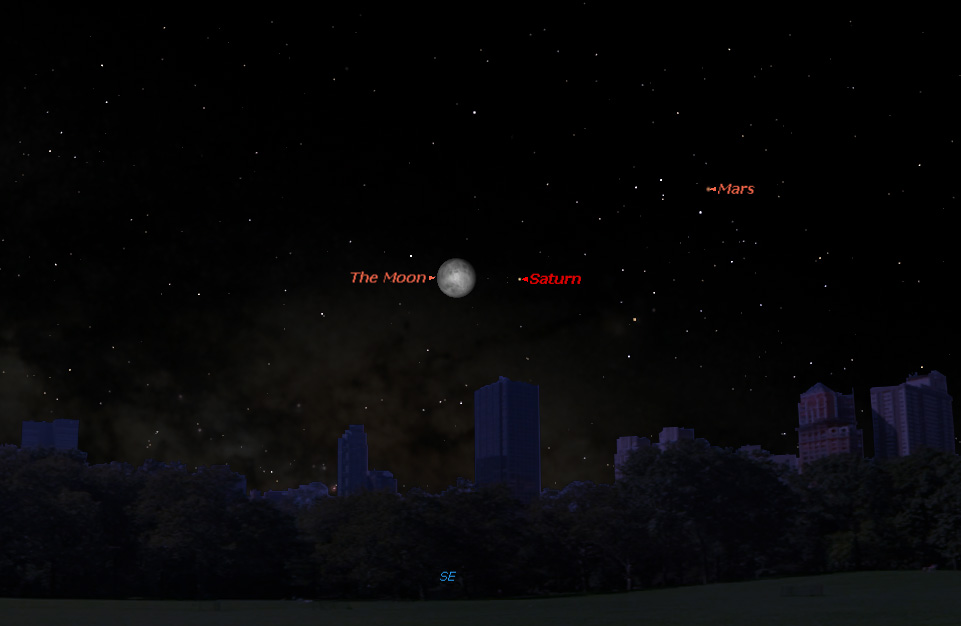Saturn Dances with the Moon Tonight: How to See It

While the celestial object of the moment is no doubt Mars, thanks to its closest approach to Earth in more than 10 years, on May 30, another planet will be attracting its own share of admirers in the coming weeks.
As summer kicks into gear, the top target of star parties and balmy outdoor astronomy gatherings will almost certainly be Saturn, the "Lord of the Rings."
Even seasoned veterans with many years of skywatching under their belts still experience a surge of excitement when they gaze at Saturn and its incredible system of rings; it's the most spectacular planet in the solar system. I always love showing Saturn to people, especially kids, who have never before seen it through a telescope. [Photos: The Rings and Moons of Saturn]
Talk about a "wow!" moment.
Saturn's famous rings are believed to be composed primarily of countless billions of icy particles that range from as large as boulders all the way down to tiny crystals.
Summer favors Saturn
From now through 2023, Saturn will be at its best during the summertime.
And the planet's famous ring system has been "opening up" each year since the rings were turned edge-on to Earth in 2009; they'll continue to tip more and more toward Earth until they reach their maximum inclination late next year. But if you point your telescope toward Saturn even now, you will be rewarded with a truly gorgeous sight.
Breaking space news, the latest updates on rocket launches, skywatching events and more!
Saturn currently forms an eye-catching triangle with Mars and the ruddy, first-magnitude star Antares. Interestingly, in a telescope, Saturn appears to be virtually the same size as Mars. But the surface of Saturn is much dimmer, because the ringed world is seven times farther away than the Red Planet.
Saturn is becoming more prominent as the date of its opposition to the sun, June 3, looms closer. (A planet is at opposition when it and the sun are on exact opposite sides of Earth from each other.) Saturn now appears to the unaided eye as a very bright (magnitude 0.1) yellowish-white "star" shining with a steady, sedate glow. It rises above the east-southeast horizon just before 9 p.m. local daylight time and stands due south by around 1:45 a.m. the following morning.
In fact, Saturn would rank as the eighth-brightest star, between Rigel in the constellation Orion and Procyon in Canis Minor.
See Saturn Sunday
Here's a great way to make a positive identification of Saturn: Late on Sunday evening (May 22), you will find the ringed planet positioned 4 degrees to the right of the nearly full moon. (Your clenched fist held at arm's length measures approximately 10 degrees).
A telescope magnifying 30-power or more will readily reveal the famous ring system, whose northern face is now tilted 26 degrees to our line of sight. For really superb views, try a 4-inch (10 centimeters) telescope at 100-power or an 8-inch (20 cm) telescope at 200-power. Or, for a really jaw-dropping view, use a 12-inch (30 cm) telescope at 300-power.
Remember that the apparent proximity of Saturn to the moon is just an illusion of perspective. On Sunday, the moon will be about 249,000 miles (400,000 kilometers) from Earth, while Saturn is more than 3,370 times farther away, at a distance of 840 million miles (1.35 billion km).
A final note: Should unsettled weather hide Sunday's Saturn-moon pairing, the two bodies will have another get-together less than a month from now, on June 18.
Editor's note: If you snap an amazing photo of Saturn or any other night-sky sight and would like to share it with Space.com and our news partners for a possible story or image gallery, send images and comments to Managing Editor Tariq Malik at spacephotos@space.com.
Joe Rao serves as an instructor and guest lecturer at New York's Hayden Planetarium. He writes about astronomy for Natural History magazine, the Farmer's Almanac and other publications, and he is also an on-camera meteorologist for News 12 Westchester, N.Y. Follow us @Spacedotcom, Facebook or Google+. Originally published on Space.com.

Joe Rao is Space.com's skywatching columnist, as well as a veteran meteorologist and eclipse chaser who also serves as an instructor and guest lecturer at New York's Hayden Planetarium. He writes about astronomy for Natural History magazine, Sky & Telescope and other publications. Joe is an 8-time Emmy-nominated meteorologist who served the Putnam Valley region of New York for over 21 years. You can find him on Twitter and YouTube tracking lunar and solar eclipses, meteor showers and more. To find out Joe's latest project, visit him on Twitter.

